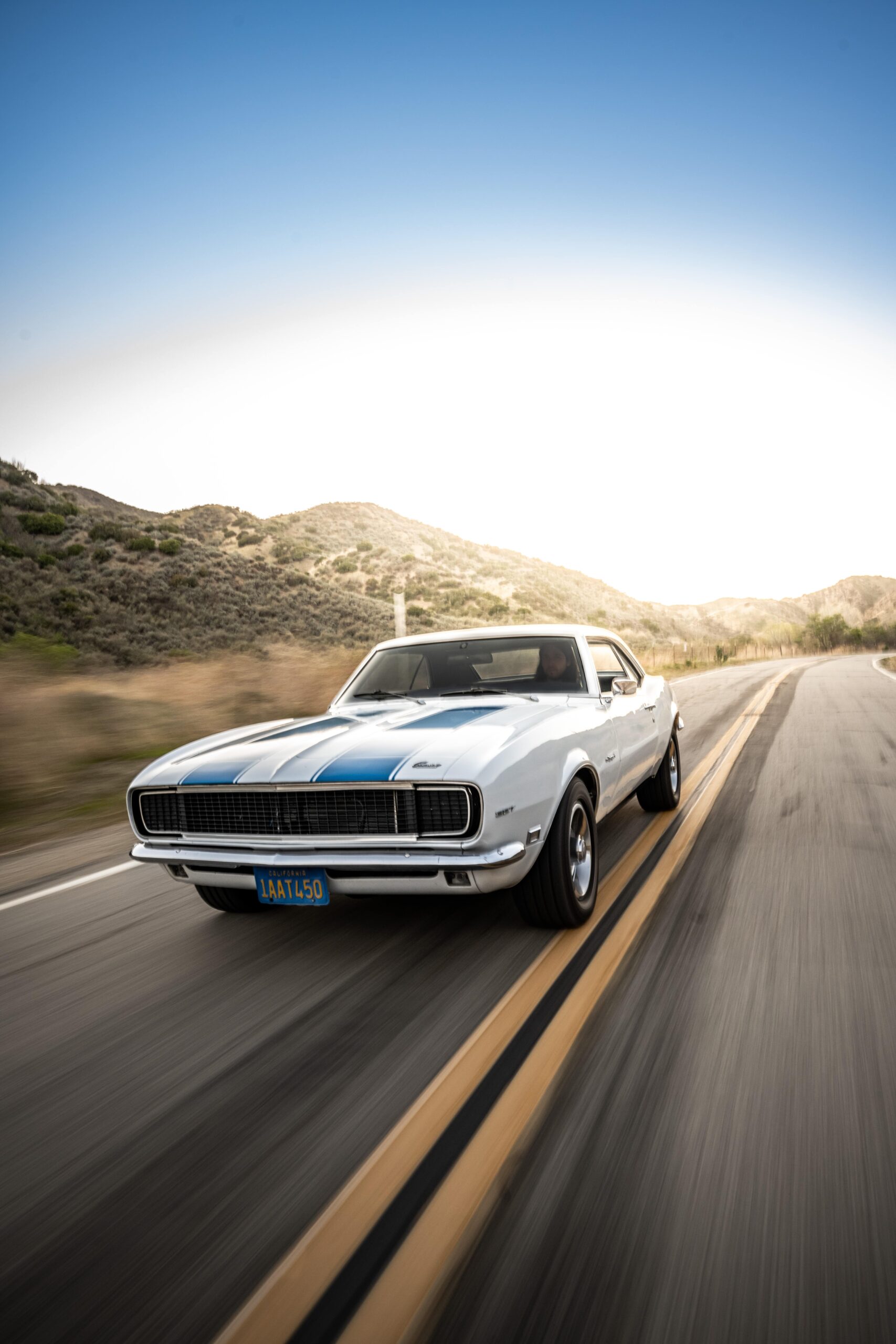Roll cages, a vital innovation in vehicle safety, are formidable guardians in the face of potential danger. These structural reinforcements, often associated with high-performance race cars and off-road vehicles, play a pivotal role in safeguarding occupants during rollover accidents and collisions. As vehicles become more advanced and powerful, the need for enhanced safety measures becomes more pressing. This begs the question: Are roll cages street legal in the realm of everyday commuting and adventurous escapades? Delving into the intersection of safety and legality, this article explores the complexities surrounding the use of roll cages on public roads, shedding light on the regulations, considerations, and factors that shape their place in vehicular landscapes.
Contents
- 1 What Are Roll Cages and Their Purpose
- 2 The Legal Landscape: Navigating Vehicle Modification Regulations
- 3 Factors Influencing Street Legality
- 4 Safety Standards and Motorsport Organizations
- 5 Roll Cages for Street Use vs. Racing
- 6 Considerations for Street-Legal Roll Cages
- 7 Are roll cages street legal?
What Are Roll Cages and Their Purpose
Roll cages, ingeniously designed structural frameworks within vehicles, serve as a crucial line of defense when unforeseen circumstances strike. Their primary function is to protect occupants comprehensively, particularly in rollovers and high-impact collisions. These meticulously engineered cages envelop the vehicle’s interior, creating a reinforced barrier that absorbs and dissipates energy forces, minimizing the risk of injury.

During rollover accidents, vehicles can end up on their sides or roofs, and the structural integrity of the vehicle’s frame might be compromised. This is where roll cages step in, preventing the cabin from collapsing and shielding occupants from direct contact with the ground or other obstacles. Likewise, in collisions, roll cages distribute the impact forces across their framework, reducing the concentration of energy on specific points and mitigating the potential for severe injuries.
While roll cages are often associated with race cars hurtling around tracks or off-road vehicles conquering challenging terrains, their utility extends beyond motorsports. Emergency response vehicles, such as fire trucks and ambulances, are also equipped with roll cages to ensure the safety of personnel during critical operations. These structures are a testament to engineering’s unwavering commitment to preserving life, making them indispensable in high-risk scenarios.
In the intricate web of vehicular regulations, including modifications often demands a closer examination of legal parameters. The status of roll cages on public roads falls within this realm of vehicle customization regulations. However, their legality as street accessories is far from universally consistent.
Across the geographical tapestry, from bustling cities to quiet country lanes, the legality of roll cages on public roads fluctuates by jurisdictional boundaries. This variance is primarily attributed to the diverse legal frameworks that different countries, states, or provinces have established for vehicle modifications. Each governing body determines whether the installation of roll cages in road vehicles aligns with their safety and operational standards.
Understanding the legal nuances surrounding roll cages necessitates exploring local regulations, for the rules governing vehicular modifications can deviate significantly from one region to another. The intersection of personalization and compliance with traffic regulations offers a glimpse into the dynamic relationship between road safety and individual preferences.
Factors Influencing Street Legality
Whether roll cages can venture onto the streets hinges on critical factors that converge to shape their street legality. These factors underscore the careful balance between augmenting safety and adhering to the intricate web of vehicular regulations.
Firstly, the type of vehicle at hand plays a pivotal role in this deliberation. The suitability of roll cage installation varies from the sleek contours of sedans to the raw power of sports cars and the rugged prowess of off-road vehicles. Different vehicle types require safety solutions, with roll cages tailored to their intended environments and functions.
Secondly, the quality of design and installation emerges as a linchpin in the quest for street legality. An impeccably designed roll cage, harmonizing seamlessly with the vehicle’s structure, maximizes its protective potential. Conversely, subpar design and hasty installation can compromise integrity and undermine the very purpose of the roll cage. It’s a testament to the critical importance of precision craftsmanship.
The third facet guiding street legality is adherence to safety standards. Established by motorsport organizations like FIA and NHRA, these standards underscore the importance of a universal roll cage construction and installation framework. Safety standards provide a benchmark against which roll cages are measured, ensuring a baseline level of security for occupants.
It’s imperative to acknowledge that improper installation can yield grave consequences. When a roll cage isn’t meticulously installed or doesn’t align with the vehicle’s design, the risk of injury can escalate. This dichotomy—where a well-installed roll cage minimizes harm while an improperly installed one amplifies it—accentuates the significance of precision in the installation process.
Safety Standards and Motorsport Organizations
Within the dynamic world of motorsports and vehicular safety, the diligent efforts of organizations like FIA (Fédération Internationale de l’Automobile) and NHRA (National Hot Rod Association) are instrumental in setting the benchmarks for roll cage integrity and effectiveness. These organizations serve as pillars of safety, forging a path towards ensuring that roll cages are not just accessories but life-preserving constructs.
The existence of safety standards established by these organizations underscores a commitment to preserving life and mitigating injury risks. These standards encompass various factors, ranging from design intricacies to installation protocols. By delineating the structural requirements, material specifications, and installation methodologies, these standards create a cohesive blueprint for constructing roll cages that safeguard occupants.

In the realm of racing applications, the significance of adhering to these safety standards escalates dramatically. The extreme conditions racing vehicles face on tracks demand structural integrity that transcends ordinary road requirements. Consequently, racing regulations often mandate the integration of roll cages that align with the meticulous criteria established by motorsport organizations. These mandates enhance driver safety and level the playing field by ensuring uniformity in safety measures across the racing spectrum.
Roll Cages for Street Use vs. Racing
As guardians of safety, roll cages assume distinct roles in everyday driving and high-speed racing. Their design and purpose diverge as they cater to the unique demands of these contrasting domains.
Roll cages designed for street use and racing exhibit notable differences. Racing roll cages are often crafted to withstand extreme forces generated by high-speed maneuvers and potential collisions on controlled tracks. These cages adhere to stringent motorsport regulations, emphasizing uncompromising safety in conditions where vehicles are pushed to their limits.
In contrast, street-use roll cages need to harmonize safety with the practicality of daily driving. The rigors of navigating through traffic, parking, and accessing vehicle amenities necessitate a more nuanced approach to design. Street-legal roll cages must balance bolstering safety and accommodating the nuances of ordinary road usage, ensuring they don’t hinder visibility, accessibility to controls, or interaction with safety features like airbags.
Racing environments benefit from controlled conditions that allow for cage design and installation uniformity. The track’s predictability enables engineers to tailor cages for specific speed ranges and potential collisions. Conversely, the unpredictability of street scenarios demands flexibility in roll cage design, accounting for a diverse range of potential accidents and safety considerations.
Considerations for Street-Legal Roll Cages
While the allure of enhanced safety through roll cages is enticing, implementing these structures in street-legal vehicles requires a delicate balance between protection and everyday practicality. Several key considerations are considered when integrating roll cages into vehicles for public road use.
Visibility and Accessibility Concerns: One of the foremost concerns is maintaining optimal visibility for the driver and passengers. Roll cage design must not obscure sightlines, hindering the ability to see traffic signals, pedestrians, and other vehicles. Furthermore, passenger ingress and egress should remain fluid and unhindered, ensuring ease of entry and exit, especially in tight urban spaces.
Preserving Safety Features: Integrating roll cages should not compromise the effectiveness of existing safety features, such as airbags and seatbelts. Carefully positioning the cage’s structural elements must avoid obstructing these critical components. The cohesive operation of these built-in safety mechanisms is paramount to preserving occupants’ well-being in routine commutes and unexpected incidents.
Professional Installation and Certification: The success of street-legal roll cages hinges on precise installation by professionals well-versed in vehicular safety standards. Deviation from recommended installation practices can negate the intended protective benefits, potentially exacerbating safety risks. Moreover, many jurisdictions require certification or inspection to ensure the installed roll cage meets established safety standards, affirming its roadworthiness.
Pursuing street-legal roll cages encapsulates the challenge of melding advanced safety with the practical realities of daily driving. By addressing visibility, accessibility, and the compatibility of safety features, vehicle owners can strike a harmonious balance between fortified protection and the unfettered convenience of road-worthy vehicles.
Are roll cages street legal?
In vehicle customization, roll cages stand as guardians of safety. Their role in protecting occupants during accidents and collisions cannot be overstated. However, the question of whether they’re street-legal is not straightforward.

Summing up the key points, roll cages differ for street use and racing, influenced by factors like vehicle type, design, and safety standards. Legalities vary by jurisdiction, underscoring the need to research local regulations and seek expert advice.
Safety remains paramount. The decision to install roll cages should prioritize both personal protection and compliance. Consulting professionals, understanding regulations, and engaging with resources are essential to making informed choices.
The Singular Allure of 2023’s Single Letter License Plates
Unleashing the Allure of the Blue Dodge Viper in 2023






